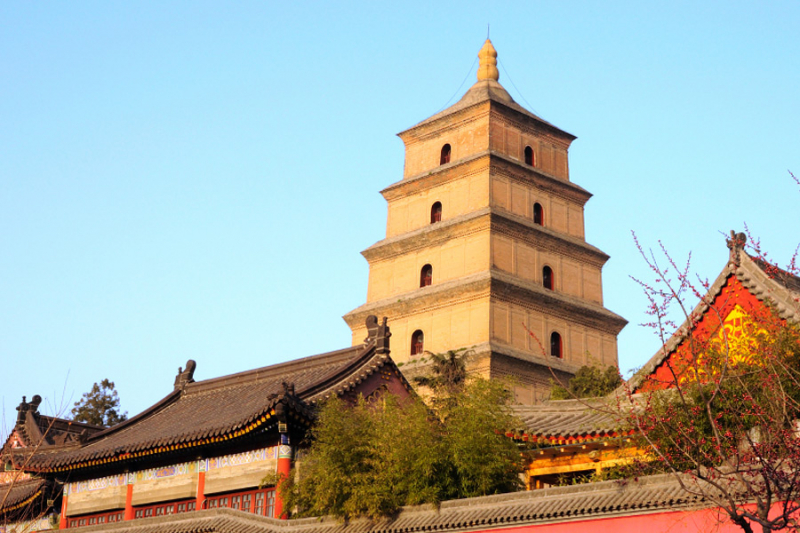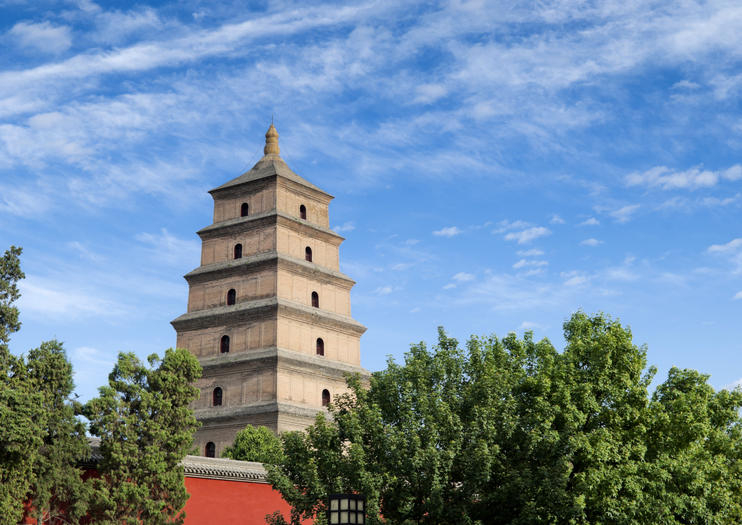Big Wild Goose Pagoda

The Big Wild Goose Pagoda, also known as the Big Wild Goose Pagoda, is a massive Buddhist pagoda in southern Xi'an, Shaanxi, China. It was constructed in 648/649 during the Tang dynasty and had five storeys at the time. It was rebuilt in 704 during Empress Wu Zetian's reign, and its outside brick facade was restored during the Ming dynasty. One of the numerous uses of the pagoda was to house sutras and Gautama Buddha statues brought to China from India by the seventh-century Buddhist monk, scholar, traveller, and translator Xuanzang. Today, the inside walls of the pagoda are adorned with carved Buddha figures by the renowned 7th-century artist Yan Liben.
This pagoda, along with many other structures along the Silk Road, was added to the World Heritage List in 2014 as part of the "Silk Roads: the Routes Network of Chang'an-Tianshan Corridor" site. As viewed now, the Big Wild Goose Pagoda's seven storeys are clearly defined by tiny roofs extending from each level; above them, arched entry portals penetrate each wall. There are exquisitely carved Buddhist figures and architectural designs on the lintels of the four ground-level gates, as well as two stone tablets inscribed by the great Tang Dynasty calligrapher Chu Suiliang. The Big Wild Goose Pagoda that you see today is simple yet majestic, towering over its surroundings and telling you much about how Buddhist doctrine and architectural ideas moved from India to China.
Location: Xi'an, Yanta District, Shaanxi, China













